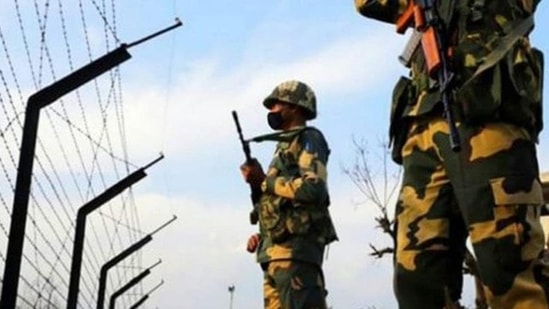Northeastern View | Demands for ILP in Meghalaya capture a complicated history of “insider-versus-outsider” tensions
Why is the ILP in the news? What is its history and how does it relate to modern nativist politics in the multi-ethnic region?
In recent weeks, the Khasi Students’ Union (KSU), a powerful civil society organisation in Meghalaya, has been agitating to demand the extension of the Inner Line Permit (ILP) regime to the state. There have also been several reported cases of assault on non-local migrant workers by members of the KSU, which recently claimed to have expelled some 2,500 of them from Meghalaya for allegedly working without valid papers.

Conrad Sangma, the Meghalaya chief minister (CM), has all but echoed the KSU’s demands by urging the Centre to introduce the ILP in the state, which is currently applicable in Mizoram, Manipur, Arunachal Pradesh and Nagaland. Simultaneously, Manipur CM, N Biren Singh, recently announced that his government had launched a probe against a supposed illegal ILP card racket in the state and arrested nine accused (which includes government officials).
Why is the ILP suddenly in the news? What is its history and how does it relate to modern nativist politics in the multi-ethnic region?
A colonial vestige
The ILP was the brainchild of the British colonial empire in India. First envisioned in 1873 through the Bengal Eastern Frontiers Regulations (1873), it was meant to demarcate the “governed” spaces in what was then a singular Bengal Province (or Presidency) from the “ungoverned” ones. In essence, it was a border between the plains and hills in the Northeast of India and a key aspect of the British government’s conception of a regulated and peaceful “frontier”.
It was designed to allow the multiple tribal communities living in the hills to exercise a significant degree of self-governance and administratively sequester them from “outsider” influence. The regime flourished because the tribal communities saw it as a protective wall between their unique world and the one outside, which was largely alien to them.
Academic Taz Barua, who calls the ILP a product of the “colonial frontierising of the hills”, notes that the British administration used it to control the “entries and exits of non-natives to the frontier areas through the issue of a permit by the deputy commissioner of that area.”
The practice was carried over to independent India with largely the same logic: shielding the tribal hills from physical, social and economic influences of non-locals and in turn, preserving their unique lifeworlds. The ILP was made part of a larger legal framework framed by the Sixth Schedule of the Indian Constitution that accorded special protection to some tribal-dominated blocs in four northeastern states.
In December 2019, Manipur became the latest state in the region to adopt the ILP regime. This opened a pandora’s box, with dominant tribal constituencies in other non-ILP states raising demands for further extension of the regime. Those in Meghalaya, which is also a tribal-dominated state, have so far emerged as the most vocal notaries of the ILP’s further expansion.
Tool of othering?
The ILP’s colonial legacy and original intent may no longer be the defining aspect of the regime. Over the decades since India’s independence, dominant ethnonationalist groups across the Northeast have ascribed new social and political connotations to it. Today, these groups often use the ILP as a stick against communities they view as “outsiders”.
By doing so, they have wrapped the ILP in complicated and even problematic binaries of “outsider and insider”, “locals and non-locals” and “indigenous and non-indigenous”. These ill-defined categories have fuelled a politics of othering in some states wherein majoritarian groups routinely deploy them to delegitimise the claim to belonging of ethnolinguistic minorities living or working in those states.
For instance, in Meghalaya, the KSU has used the ILP demand to target poor migrant workers (mainly from North India) and even tourists from outside the state, including from the neighbouring state of Assam. By setting up “ILP checkpoints” and cracking down on “illegal” migrant workers, the group has been engaging in violent vigilantism with little interference from the state government.
In Manipur, the state government has been using the ILP regime to reaffirm the majoritarian vision of who is a true Manipuri and who isn’t. In fact, it has conflated the permit regime with its own demands for an Assam-like National Register of Citizens (NRC) for Manipur. For instance, in March, CM Singh said that the base year of the Manipur NRC should be 1961 – which is also what the state cabinet adopted as the ILP’s base year in 2022.
Singh, notably, said that anyone who entered and settled in Manipur after 1961 would be identified and deported. This could put thousands of people who lack documentation to prove their historical legacies in the state in a precarious position. It would also transform the ILP into a de facto local status determination regime and in turn, an informal and arguably arbitrary foreigner detection system.
Therefore, the historical trajectory of the ILP captures the tenuous history of nativist politics in the northeast, which shows how vested groups can redirect the constitutionally-tenable programme of tribal protection towards xenophobic and sometimes even violent ends.
Angshuman Choudhury is a New Delhi-based researcher and writer, formerly an Associate Fellow at the Centre for Policy Research and focuses on Northeast India and Myanmar. The views expressed are personal.
All Access.
One Subscription.
Get 360° coverage—from daily headlines
to 100 year archives.



HT App & Website







